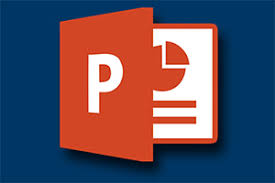لینک دانلود و خرید پایین توضیحات
دسته بندی : پاورپوینت
نوع فایل : PowerPoint (..pptx) ( قابل ویرایش و آماده پرینت )
تعداد صفحه : 32 صفحه
قسمتی از متن PowerPoint (..pptx) :
Amebiasis Infection is acquired through the ingestion of parasite cysts, which measure 10-18 μm in diameter and contain 4 nuclei. Cysts are resistant to harsh environmental conditions, including chlorine concentrations commonly used in water purification, but can be killed by heating to 55°C (131°F). After ingestion, cysts are resistant to gastric acidity and digestive enzymes and germinate in the small intestine to form trophozoites. These large, actively motile organisms colonize the lumen of the large intestine and may invade the mucosal lining. Untreated water and night soil (human feces used as fertilizer) are important sources of infection. Food handlers shedding amebic cysts play a role in spreading infection. Direct contact with infected feces can also result in person-to-person transmission. Clinical presentations range from asymptomatic cyst passage to amebic colitis, amebic dysentery, ameboma, and extraintestinal disease. Up to 10% of infected persons develop invasive disease within a year. Thus, asymptomatic carriers should be treated. Severe disease is more common in young children, pregnant women, malnourished individuals, and persons taking corticosteroids, and invasive disease is more common in men. Extraintestinal disease usually involves the liver, but less common extraintestinal manifestations include amebic brain abscess, pleuropulmonary disease, ulcerative skin, and genitourinary lesions. Amebic Colitis Amebic colitis may occur within 2 wk of infection or may be delayed for months. The onset is usually gradual, with colicky abdominal pains and frequent bowel movements (6-8/day). Diarrhea is frequently associated with tenesmus. Almost all stool is heme-positive, but most patients do not present with grossly bloody stools. Generalized constitutional symptoms and signs are characteristically absent, with fever documented in only one third of patients. Amebic colitis affects all age groups but is strikingly common in children 1-5 yr of age. Severe amebic colitis in infants and young children tends to be rapidly progressive with more frequent extraintestinal involvement and high mortality rates, particularly in tropical countries. Amebic dysentery can result in dehydration and electrolyte disturbances. A diagnosis of amebic colitis is made in the presence of compatible symptoms with detection of E. histolytica antigens in stool. This approach has a >95% sensitivity and specificity and coupled with a positive serology test is the most accurate means of diagnosis in developed countries. The E. histolytica II stool antigen detection test (TechLab, Blacksburg, VA) is able to distinguish E. histolytica from E. dispar infection. Microscopic examination of stool samples has a sensitivity of 60%. Sensitivity can be increased to 85-95% by examining 3 stools, as excretion of cysts can be intermittent. However, microscopy cannot differentiate between E. histolytica and E. dispar unless phagocytosed erythrocytes (specific for E. histolytica) are seen. Various serum antiamebic antibody tests are available. Serologic results are positive in 70-80% of patients with invasive disease (colitis or liver abscess) at presentation and in >90% of patients after 7 days of disease symptoms. The most sensitive serologic test, indirect hemagglutination, yields a positive result even years after invasive infection. Therefore, many uninfected adults and children in highly endemic areas demonstrate antibodies to E. histolytica. Polymerase chain reaction detection in stool of E. histolytica is also able to distinguish E. histolytica from E. dispar but is less sensitive (72%) than the stool antigen test. The differential diagnosis for amebic colitis includes: Colitis caused by bacterial (Shigella, Salmonella, enteropathogenic Escherichia coli, Campylobacter, Yersinia, Clostridium difficile), mycobacterial (tuberculosis and atypical mycobacteria), and viral (cytomegalovirus) pathogens, as well as noninfectious causes such as inflammatory bowel disease.
دسته بندی : پاورپوینت
نوع فایل : PowerPoint (..pptx) ( قابل ویرایش و آماده پرینت )
تعداد صفحه : 32 صفحه
قسمتی از متن PowerPoint (..pptx) :
Amebiasis Infection is acquired through the ingestion of parasite cysts, which measure 10-18 μm in diameter and contain 4 nuclei. Cysts are resistant to harsh environmental conditions, including chlorine concentrations commonly used in water purification, but can be killed by heating to 55°C (131°F). After ingestion, cysts are resistant to gastric acidity and digestive enzymes and germinate in the small intestine to form trophozoites. These large, actively motile organisms colonize the lumen of the large intestine and may invade the mucosal lining. Untreated water and night soil (human feces used as fertilizer) are important sources of infection. Food handlers shedding amebic cysts play a role in spreading infection. Direct contact with infected feces can also result in person-to-person transmission. Clinical presentations range from asymptomatic cyst passage to amebic colitis, amebic dysentery, ameboma, and extraintestinal disease. Up to 10% of infected persons develop invasive disease within a year. Thus, asymptomatic carriers should be treated. Severe disease is more common in young children, pregnant women, malnourished individuals, and persons taking corticosteroids, and invasive disease is more common in men. Extraintestinal disease usually involves the liver, but less common extraintestinal manifestations include amebic brain abscess, pleuropulmonary disease, ulcerative skin, and genitourinary lesions. Amebic Colitis Amebic colitis may occur within 2 wk of infection or may be delayed for months. The onset is usually gradual, with colicky abdominal pains and frequent bowel movements (6-8/day). Diarrhea is frequently associated with tenesmus. Almost all stool is heme-positive, but most patients do not present with grossly bloody stools. Generalized constitutional symptoms and signs are characteristically absent, with fever documented in only one third of patients. Amebic colitis affects all age groups but is strikingly common in children 1-5 yr of age. Severe amebic colitis in infants and young children tends to be rapidly progressive with more frequent extraintestinal involvement and high mortality rates, particularly in tropical countries. Amebic dysentery can result in dehydration and electrolyte disturbances. A diagnosis of amebic colitis is made in the presence of compatible symptoms with detection of E. histolytica antigens in stool. This approach has a >95% sensitivity and specificity and coupled with a positive serology test is the most accurate means of diagnosis in developed countries. The E. histolytica II stool antigen detection test (TechLab, Blacksburg, VA) is able to distinguish E. histolytica from E. dispar infection. Microscopic examination of stool samples has a sensitivity of 60%. Sensitivity can be increased to 85-95% by examining 3 stools, as excretion of cysts can be intermittent. However, microscopy cannot differentiate between E. histolytica and E. dispar unless phagocytosed erythrocytes (specific for E. histolytica) are seen. Various serum antiamebic antibody tests are available. Serologic results are positive in 70-80% of patients with invasive disease (colitis or liver abscess) at presentation and in >90% of patients after 7 days of disease symptoms. The most sensitive serologic test, indirect hemagglutination, yields a positive result even years after invasive infection. Therefore, many uninfected adults and children in highly endemic areas demonstrate antibodies to E. histolytica. Polymerase chain reaction detection in stool of E. histolytica is also able to distinguish E. histolytica from E. dispar but is less sensitive (72%) than the stool antigen test. The differential diagnosis for amebic colitis includes: Colitis caused by bacterial (Shigella, Salmonella, enteropathogenic Escherichia coli, Campylobacter, Yersinia, Clostridium difficile), mycobacterial (tuberculosis and atypical mycobacteria), and viral (cytomegalovirus) pathogens, as well as noninfectious causes such as inflammatory bowel disease.
فرمت فایل پاورپوینت می باشد و برای اجرا نیاز به نصب آفیس دارد













